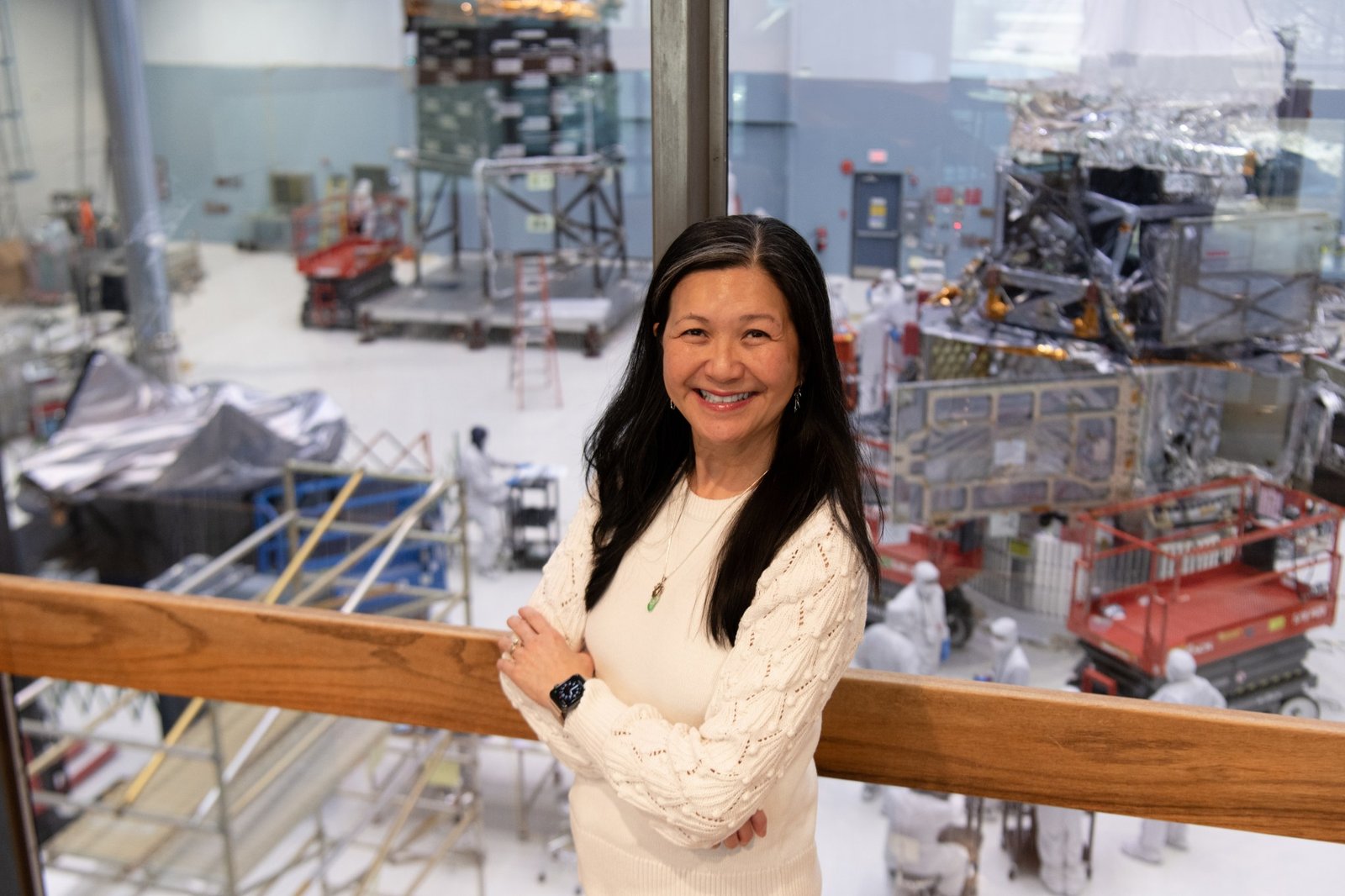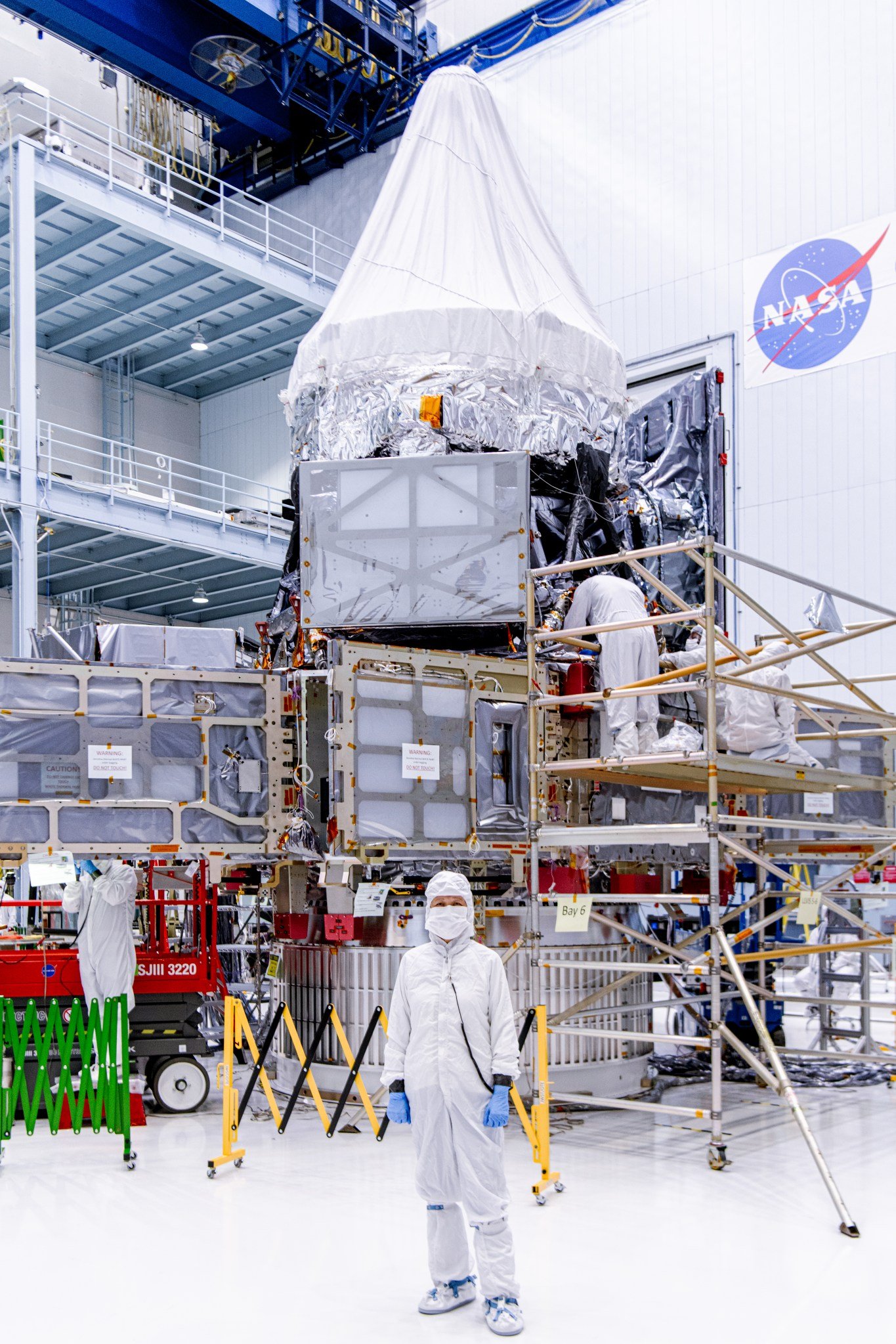Deputy Observatory Manager – Goddard Space Flight Center
Growing up in Malaysia and Singapore, Hsiao Smith — now the deputy observatory manager for NASA’s Nancy Grace Roman Space Telescope — never imagined she’d have a career at NASA. But when she moved near NASA’s Goddard Space Flight Center in Greenbelt, Maryland, things quickly fell into place. A high school counselor noticed her aptitude for math and science and encouraged her to apply for a junior fellowship program at Goddard.
“I never could have imagined that a summer internship would change my life and lead to such a fulfilling career at NASA!” Hsiao says. “Prior to that, I had no idea what an engineer did. Now, I’ve spent over 35 years involved in engineering at Goddard.”
Hsiao participated in a program that allowed her to come back to Goddard during summers and spring and winter breaks, so she continued working while going to college.
She began her internship working on flight dynamics. Fueled by a desire to work more hands-on with flight hardware, Hsiao transferred to the power branch and started designing high-voltage power supplies for science instruments that would be launched into space.
Hsiao earned a bachelor degree in electrical engineering from the University of Maryland and then started working at Goddard full time. She continued her studies, later receiving a master’s degree in engineering management.
“Having hands-on experience on flight hardware gave me a better understanding of how to apply what I learned in the classroom to real life,” Hsiao says. “That experience was invaluable, and it gave me the opportunity to discover what I enjoy doing — designing and building flight hardware. And it was incredible to go from college straight into a job working as an engineer at NASA!”
Hsiao soon moved on to designing power systems for spacecraft, starting with XTE, the Rossi X-ray Timing Explorer. It was the first time she had worked on a project all the way from the design concept to launch.
Building on that experience, Hsiao spent the next 13 years working on the Hubble Space Telescope — first as the power systems manager, then the Cosmic Origins Spectrograph instrument manager, and finally the Hubble Servicing Mission 4 instrument systems manager. In the latter role, Hsiao delivered two new instruments to Hubble and worked with astronauts to conduct repairs on two Hubble instruments in space.
“Working on Hubble opened the door to so many different opportunities,” Hsiao says. “I had the honor of working not only with the dedicated and talented engineers and scientists here at Goddard, but also world-class experts from other NASA centers, universities, contractors throughout the U.S., and international partners. And I had incredible opportunities few others will ever have, like working with astronauts and going on the shuttle before it launched from the Kennedy Space Center!”
Following her time with Hubble, she worked on the Lunar Laser Communications Demonstration project as a project manager. Hsiao worked with MIT/Lincoln Lab to develop and test NASA’s first optical communication technology that used a laser. Then Hsiao became the deputy program manager for JPSS (the Joint Polar Satellite Systems) where she designed the architecture and developed the cost and schedule for future JPSS missions.
She then spent some time as the technical deputy division manager for the Satellite Servicing Projects Division, continuing the legacy of the Hubble servicing missions and advancing the state of the art in robotic servicing. This work demonstrated how robots could be used to refuel spacecraft and service their instruments.
Now, she serves as a deputy observatory manager for NASA’s Nancy Grace Roman Space Telescope. Hsiao has worked with Goddard’s engineering team to build the Roman spacecraft bus, which consists of avionics, attitude control, communication and propulsion systems, and other subsystems such as the solar arrays, deployable aperture cover, and the outer barrel assembly. She is currently preparing to test Roman’s newly combined spacecraft and payload.
“It’s a privilege to manage and coordinate Roman hardware from the subsystem level to ensure that once they all work individually, they all function together as an observatory,” Hsiao says.
Though she’s served in many roles at NASA, problem-solving has been a constant thread running through Hsiao’s career.
“It’s exciting to come to work every day not knowing what’s in store for me,” she says. “It’s about coming in and resolving issues, making sure the team has the resources they need to get their jobs done.”
Hsiao urges young engineers to take on new opportunities, keep pursuing their dream job, and seek out advice from mentors and people in career fields you’re interested in.
“I’m working in my dream job, and it all goes back to my great mentors and bosses who were willing to give me opportunities beyond my expectations and to guide me toward my interests,” she says. “All the experiences I’ve had throughout this very fulfilling career stemmed from filling out an application as a high school senior. You never know where an opportunity will lead!”
By Ashley Balzer
NASA’s Goddard Space Flight Center


